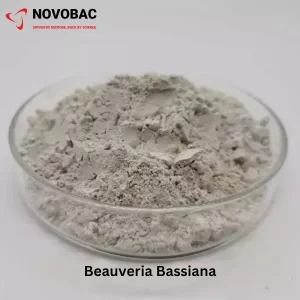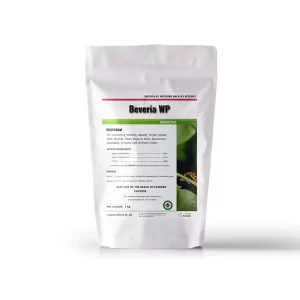Often only a few millimeters long, thrips are a tiny, slender type of insect that cause significant damage to plants. Their rasping, sucking mouthparts, which they employ to consume plant sap, are what make them so distinctive. Therefore, organic thrip control is the process of preventing and managing thrip damage.
Identifying their species affecting your plants is important for effective thrip control, becuase different types may respond differently to treatments. Choosing the appropriate method leads to a successful outcome.

Western flower thrips (Frankliniella occidentalis) like to eat a variety of plants, ornamental plants, fruits, and vegetables. They cause damage to the plants by piercing the leaves and sucking out the sap, leading to deformed leaves and reduced yields. They also transmit plant viruses and diseases, making them a significant threat to plant health.
They (Frankliniella fusca) infect tobacco plants and other plants, cotton, peanuts, and other crops. They are quite little (< 1.5 mm) and dark brown to black and known for their ability to reproduce rapidly and cause significant damage to plants. Deformities and discolouration are brought about by their feeding on plant leaves, blooms, and buds.
They (thrips tabaci) are named for their preference for feeding on onion and garlic plants as well as vegetables and ornamental flowers and cause similar damage to plants as Western flower thrips, leading to stunted growth and deformed leaves.
They (Heliothrips haemorrhoidalis) are little, usually less than 1.5 mm, and have a yellow-brown colour, and commonly infect greenhouse plants. They reproduce rapidly and cause significant damage to plants by feeding on their leaves, blossoms, and buds.

Beauveria bassiana pet safe indoor insecticide is a natural fungus and thrips insecticide that is a biological control agent to prevent insect infestations. It is an organic insecticide and works by infecting and killing the pests. This ultimately reduces their population and prevents thrip damage to plants.
When the product is applied to plants, this organic pesticide attaches to the cuticle and penetrates their body. The fungus then grows inside the insects, causing it to become weak and eventually die. Beauveria bassiana has been shown to be effective in controlling a wide range of insect species, including Western flower and Onion thrips.
Chemical controls are a common method used for insect treatment. Here are some of the most commonly used chemical thrip control, along with their pros and cons.
Neonicotinoids: This group of insecticides works by killing insects through interfering with their nervous system. They are effective in controlling insects and have a broad spectrum of activity. Hoever, They also show disadvantagies :
Pyrethroids: This is a group of insecticides by interfering with their neurological systems. They have a wide range of activities and react quickly, and safe for mammals. But it also shows shortcomings:

Culture control is a natural thrip management that involves cultural practices to prevent or minimize populations. Here are some of the most common culture control methods, along with their pros and cons, and a focus on how to get rid of thrips naturally:
Crop rotation: The insects have specific host plants, and by rotating crops, they will have less access to their preferred host plants. May not be practical in all situations and require additional planning and resources to implement.
Sanitation: This involves removing plant debris and other potential insect habitats,weeds, from the growing area. However, it requires ongoing maintenance and attention to be effective and may not completely eliminate the populations.
Physical barriers: To prevent pests from accessing plants. Examples of physical barriers include insect netting, screens, or other types of covers. Thy are effective at preventing pests from accessing plants and can be combined with additional techniques to achieve more control. But the cons are expensive to implement and interfere with plant growth and development.

While there are a variety of methods for treating thrips, one highly effective and popular option is to use the bio insecticides BEVERIA WP. These organic thrip control products contain the fungus Beauveria bassiana, which is a natural insecticide that infects and kills pests.
The BEVERIA WP product is considered one of the best methods for controlling thrips for several reasons:
In conclusion, the beneficial natural fungi Beauveria bassiana and the BEVERIA WP product can be used as effective biological control agents against thrips infestations. They provide safe and sustainable alternatives to chemical insecticides, making them ideal options for organic thrip control.
These natural methods pose no toxicity risks to humans, non-target organisms, or the environment. Additionally, they do not leave any harmful residue on plants. Growers can effectively protect their plants from thrip damage and promote a healthier and more sustainable growing environment.
Cutworms in gardens are a major menace to all..
As a farmer,I inspect my fields daily to monitor..
It all started with a worried farmer named Mr...

Leave a Reply